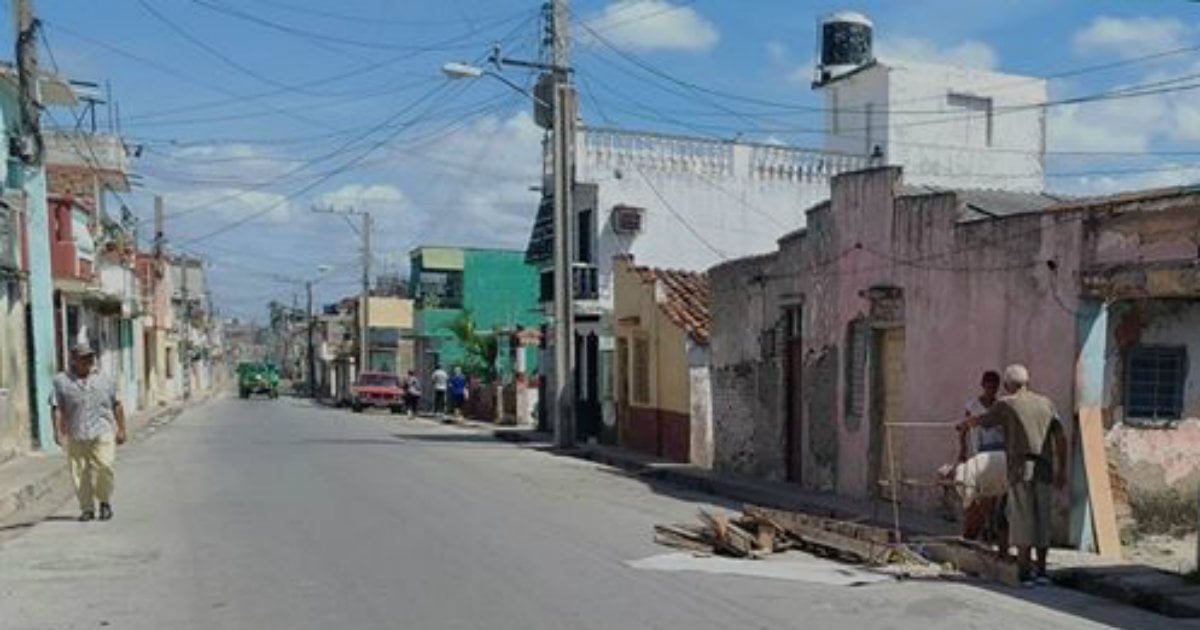In an effort to showcase "innovation" amidst a dire shortage of building materials, Villa Clara's provincial government is constructing two experimental homes—one in Santa Clara and another in Remedios—that completely omit the use of cement and steel. This "demonstrative project," set for completion in December, starkly contrasts with the urgent need for 77,000 housing solutions in the province, where 39% of homes are in fair or poor condition, according to the provincial newspaper Vanguardia.
Governor Milaxy Sánchez Armas explained during a Thursday session of the Provincial Party Bureau, chaired by Susely Morfa González, the first secretary of the organization in the central region, "We are constructing a home in Santa Clara and another in Remedios without using cement or steel. There is a commitment to complete them by December to demonstrate this alternative, which helps mitigate the rising costs of construction materials."
However, this "star solution"—the experimental homes—lacks a comprehensive plan for widespread application, does not specify which alternative materials are being used, nor how the durability of these constructions will be ensured.
Housing Infrastructure Deterioration
The report highlights that 39% of Villa Clara's housing stock is assessed as being in fair or poor technical condition, necessitating the construction and rehabilitation of over 46,000 and 31,000 homes, respectively. The municipalities facing the most severe challenges are Cifuentes, Sagua, Camajuaní, Manicaragua, Ranchuelo, and Caibarién, the press outlet noted.
Meanwhile, social programs such as the one for mothers with three or more children—legally prioritized—have benefited only five families this year. The closure of the quarry in Sagua la Grande due to relocation issues of nearby homes and the migration of skilled workers to the private sector paint a bleak picture, where promises of "regional meetings" and "university advisory" seem inadequate against the scale of the housing collapse.
Failed Government Promises
One conclusion from the meeting included the potential call for "a regional meeting" with workers and managers to "present work projections and a recovery program to boost Villa Clara's housing stock," as mentioned by Vanguardia.
The collapse of housing construction in Cuba sharply illustrates the depth of the economic and social crisis plaguing the country. In 2024, the number of homes built was 5.5 times fewer than in 1984 and 15 times fewer than in 2006. Even in 1992—a critical year during the Special Period—almost triple the number of homes were constructed compared to last year, according to economist Pedro Monreal.
Only 1,344 homes were built in the first quarter of 2025, representing just 12.4% of the official plan of 10,795. This statistic not only confirms the collapse of the state construction program but also highlights the structural crisis of the sector and the government's inability to address one of the population's most urgent needs.
Investment Priorities Misaligned
Simultaneously, recent years' statistics reveal a clear trend: since at least 2014, investments in tourism have increasingly dominated the national budget at the expense of crucial sectors like housing and social infrastructure. These investment priorities, despite economic stagnation and widespread deterioration in sensitive areas such as public health or food supply, reveal a growing disconnect between the Cuban government's priorities and the real needs of its people.
Official speeches continue to recycle unfulfilled promises: "greater efficiency," "technological innovation," "university collaboration," or "sustainable strategies." Meanwhile, more Cubans find themselves without homes, living on the streets, or unable to repair their homes at risk of collapse.
Understanding Villa Clara's Housing Experiment
What materials are being used in Villa Clara's experimental homes?
The specific alternative materials being used in Villa Clara's experimental homes have not been disclosed by the government, raising concerns about their durability and feasibility.
How many homes does Villa Clara need to address its housing crisis?
Villa Clara requires urgent solutions for approximately 77,000 homes, with over 46,000 needing construction and 31,000 needing rehabilitation due to poor conditions.
How does Cuba's current housing construction compare to previous years?
Cuba's housing construction has dramatically decreased, with 2024 seeing 5.5 times fewer homes built than in 1984 and 15 times fewer than in 2006, highlighting a severe decline over the decades.
